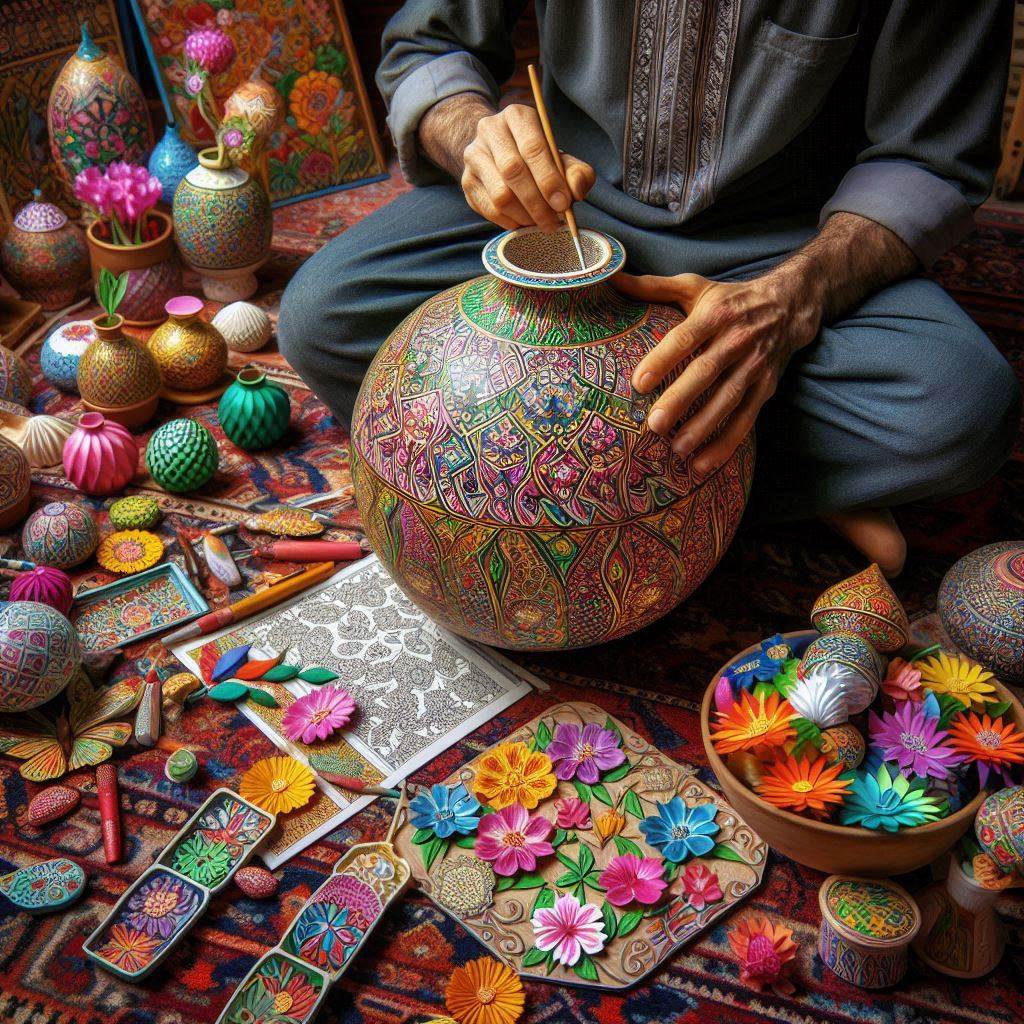
Menu

Papier-mâché, locally known as Kar-i-Qalamdani, is one of Kashmir’s most charming and colorful art forms — a perfect blend of creativity, culture, and sustainability. Introduced during the 15th century by Persian artisans, this craft has since evolved into a signature of Kashmiri artistry, turning humble paper into treasured decorative items.
The process begins with waste paper soaked, pulped, and molded into various shapes — boxes, vases, trays, and ornaments. Once dried and polished, these objects become blank canvases for intricate hand-painting. Skilled artisans, often from generations-old families, use fine brushes and natural colors to paint traditional motifs such as chinar leaves, floral vines, geometric patterns, birds, and Mughal-inspired designs.
Each item reflects not only the artisan’s hand but also the soul of Kashmir — its landscapes, stories, and spiritual essence. The golden touches, vibrant colors, and delicate patterns exude a charm that transcends time. Despite being lightweight and fragile in appearance, papier-mâché crafts are surprisingly durable, often lasting for decades if properly cared for.
This eco-friendly craft is also a quiet act of resistance — against the industrial rush, against forgetting. While mass production threatens its survival, papier-mâché continues to thrive in artisan clusters around Srinagar, with growing appreciation from collectors, tourists, and global art enthusiasts.
To own a piece of Kashmiri papier-mâché is to hold a fragment of the Valley’s poetic beauty — shaped by hand, painted with care, and rooted in centuries of tradition.

@THE INDIAN ART COTTAGE
© The Indian Art Cottage | All Rights Reserved | 2025